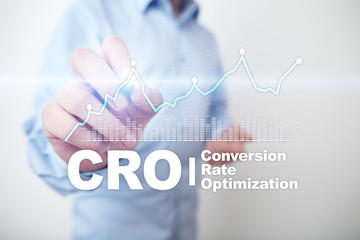Understanding Conversion Rate Optimization (CRO)
Understanding Conversion Rate Optimization (CRO)
Blog Article
In the dynamic arena of digital marketing, organizations are constantly striving to enhance their online presence, attract more visitors, and eventually, convert those visitors into customers. Among the pivotal strategies useful to achieve these goals is conversion rate optimization. Essentially, CRO is the systematic procedure for increasing the area of website visitors having a desired action-whether it's purchasing, signing up for a newsletter, or filling out a contact form.
The significance of Conversion Rate Optimization
Rate of conversion Optimization holds immense importance as it directly impacts a website's effectiveness and profitability. Create a scenario the place where a company invests heavily in getting visitors to its website through various marketing channels. Despite the influx of visitors, if a significant portion of them leave without engaging or making a purchase, the investment fails to yield satisfactory returns. This is where CRO steps in-it focuses on maximizing the value of each visitor by ensuring that more of them complete the desired actions.
Key Components of Conversion Rate Optimization
1 Data Analysis: CRO begins with a thorough analysis of data related to user behavior on the website. This includes examining metrics such as bounce rates, time spent on site, and the paths users take before leaving or converting.
2 Identifying Barriers: Once data is collected, the next step is to identify barriers that prevent users from completing desired actions. Common barriers include confusing navigation, unclear calls-to-action (CTAs), or lengthy checkout processes.
3 Hypothesis Formulation: Depending on the insights gained, hypotheses are formulated regarding changes that can improve sales. These hypotheses are generally tested through A/B testing or multivariate testing.
4 Testing and Experimentation: Testing involves creating variations of website pages or elements (including headlines, CTAs, or forms) to determine what version performs better when it comes to conversions. This method helps in refining the consumer experience based on empirical evidence rather than assumptions.
5 Implementation: Once a winning variation is identified through testing, it is implemented over the internet. Continuous monitoring and additional optimization may follow to keep up or further enhance conversions.
Strategies for Effective CRO
Successful Conversion Rate Optimization requires a combination of analytical rigor, creativity, and a deep understanding of user psychology. Below are a few strategies commonly used by digital marketers:
• User Experience (UX) Design: Enhancing the overall consumer experience can significantly impact conversions. This includes making navigation intuitive, ensuring fast loading times, and creating mobile-friendly designs.
• Clear Call-to-Actions (CTAs): CTAs should be prominent, persuasive, and clearly communicate what action users should take next. A/B testing different variations of CTAs will help determine which ones resonate best with all the audience.
• Content Optimization: High-quality, relevant content not just attracts visitors but additionally keeps them engaged. Tailoring content to address the needs and pain points of one's target audience can cause higher conversions.
• Trust and Credibility: Building trust is crucial for converting visitors into customers. This can be achieved through customer testimonials, security certifications, and transparent policies regarding pricing information privacy.
• Performance Optimization: Making sure your website performs well across all devices and browsers is important. Even minor improvements in loading times can have a significant impact on user satisfaction and sales.
Measuring Success
Key performance indicators (KPIs) for example conversion rate, bounce rate, and average order value are utilized to measure the effectiveness of CRO efforts. By continuously monitoring these metrics and iterating based on findings, businesses can perform sustainable improvements within their online conversions.
Conclusion
To conclude, Conversion Rate Optimization is a strategic way of maximizing the need for website traffic by enhancing the likelihood of visitors taking desired actions. By leveraging data-driven insights, conducting experiments, and continuously optimizing the user experience, businesses can unlock new opportunities for growth and profitability inside the competitive digital landscape. As technology evolves and consumer behaviors shift, mastering the skill of CRO remains essential for staying ahead and achieving long-term success online.